Seoul, an enthralling city, harmoniously blends history and contemporary life. Amidst the urban landscape, tranquil palaces stand as testaments to their enduring grandeur. Explore the magnificent Gyeongbokgung Palace to witness the extraordinary architectural prowess and artistic legacy of a bygone royal era.
Embracing the beginning and the end of Joseon
Gyeongbokgung Palace
It is an iconic palace of the Joseon Dynasty. It is the first palace built right after the establishment of Joseon, serving as "Beobgung," the main palace where the king resided. It depicts the basic layout of a palace, including spaces for political matters, royal residences, and a back garden for leisure activities. Although most palaces were destroyed during Japan's colonial era, ongoing restoration efforts are reviving them to their original splendor.
Recommended route for a seamless exploration
Recommended sightseeing course
Gwanghwamun Gate → National Palace Museum of Korea → Heungryemun Gate → Geunjeongjeon Hall → Gyeonghoeru Pavilion → Gangnyeongjeon Hall and Gyotaejeon Hall → Sojubang → Hyangwonjeong Pavilion → National Folk Museum of Korea · Estimated time: 3 hours
The more you learn, the more enjoyable it will be.
Brief Description of Each Course
- Gwanghwamun Gate
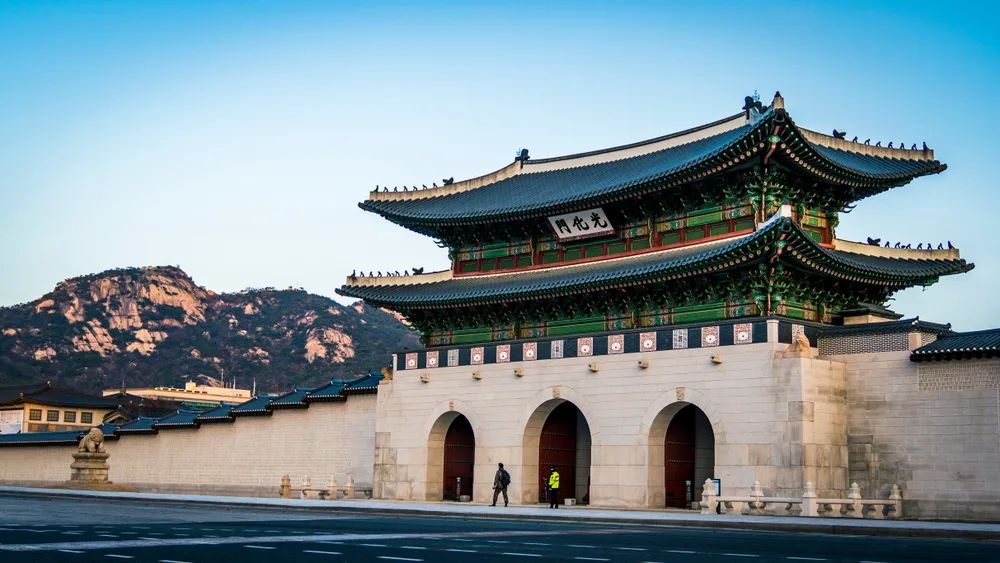
shutterstock.com
The main gate is the face of the Gyeongbokgung Palace. It is a majestic fortress-like structure with stone walls and a pavilion on top. The king entered through the central gate, while the prince and his entourage entered through the left and right gates.
- National Palace Museum of Korea
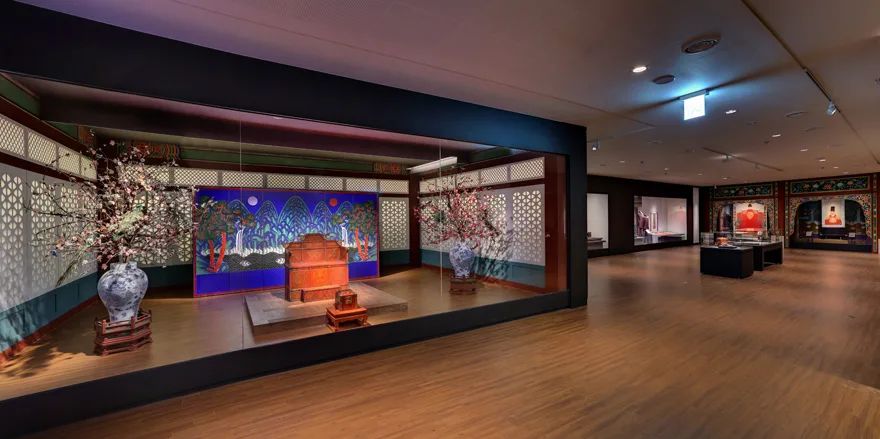
gogung.go.kr/perm.do?viewName=perm_ex01
This is a royal culture exhibition hall with a large collection of over 2,000 Joseon Dynasty artifacts. Because there is no admission fee, it provides an excellent opportunity to explore without financial constraints.
- Heungryemun Gate
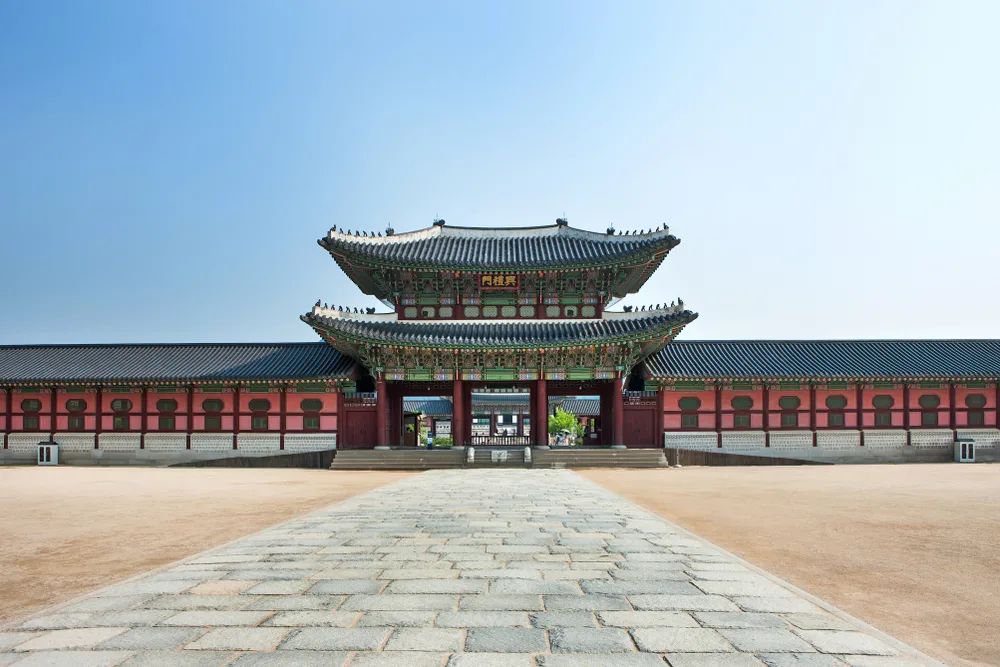
shutterstock.com
It is the middle of three gates that lead into the Gyeongbokgung Palace. It is situated between the Gwanghwamun and Geunjeongmun gates. There is a path in the middle called "Eodo," which the king used to travel from Gwanghwamun Gate to Heungryemun Gate.
- Geunjeongjeon Hall

shutterstock.com
It is a building where important national ceremonies were held. It is designated as a national treasure. It has the largest scale of any architectural structure within the palace. This hall has recently gained international attention after BTS performed with it as a backdrop.
- Gyeonghoeru Pavilion
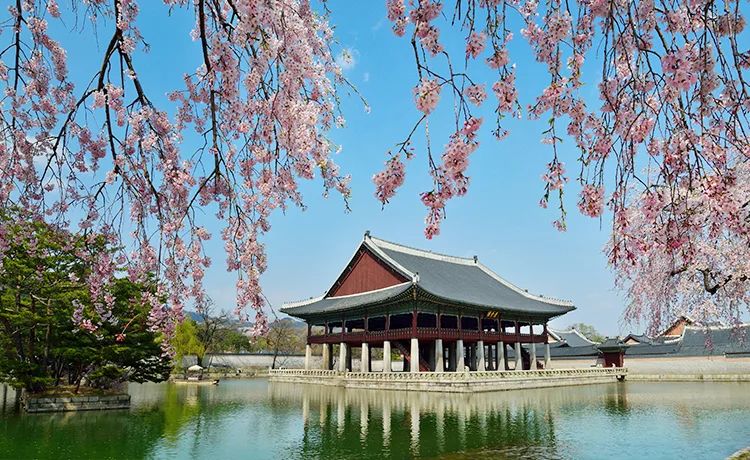
royalpalace.go.kr/content/preview/preview03.asp
It is a two-story pavilion on the northwest side of Geunjeongjeon Hall. It was used as a banquet hall and is known for its beautiful scenery, with the pond surrounding it, making it an excellent photo spot inside the palace. In the spring, cherry blossoms bloom all over the area.
- Gangnyeongjeon and Gyotaejeon Halls
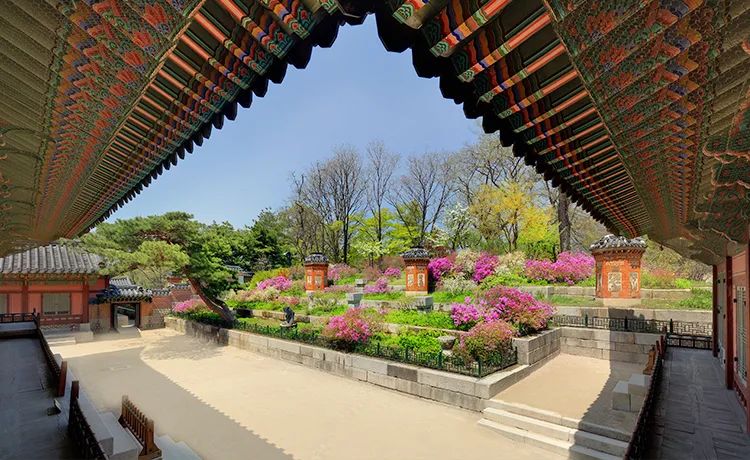
royalpalace.go.kr/content/preview/preview03.asp
Gangnyeongjeon Hall is the king's sleeping quarters, while Gyotaejeon Hall is the queen's. Amisan, the palace garden, is located behind Gyotaejeon. The garden was built by piling up soil from the excavation of the Gyeonghoeru Pond.
- Sojubang
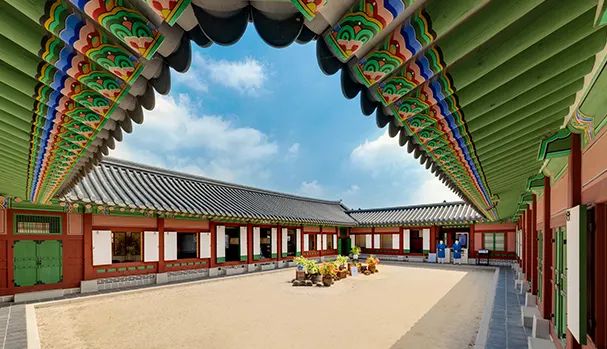
royalpalace.go.kr/content/preview/preview04_13.asp
It is where palace cuisine was prepared. It is divided into three sections: Naesojubang, which prepares the king's royal meals, Oesojubang, which prepares banquet food, and Saenggwabang, which prepares special dishes. Saenggwabang is currently operated as a café, making it a pleasant place to unwind.
- Hyangwonjeong Pavilion
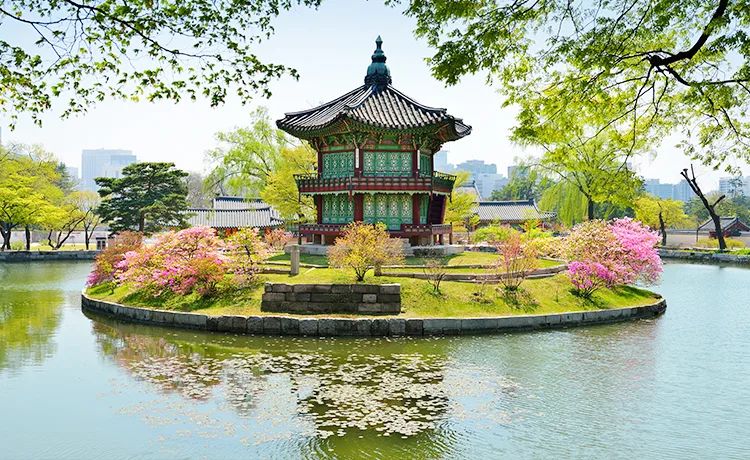
royalpalace.go.kr/content/preview/preview03.asp
It is a pavilion with a hexagonal-hipped roof where a king would rest. Although small in size, it is delicately built and has a distinct charm that contrasts with the grandeur of the Gyeonghoeru Pavilion. The pavilion is surrounded by blooming flowers in the spring, transforming it into a flower paradise.
- National Folk Museum of Korea
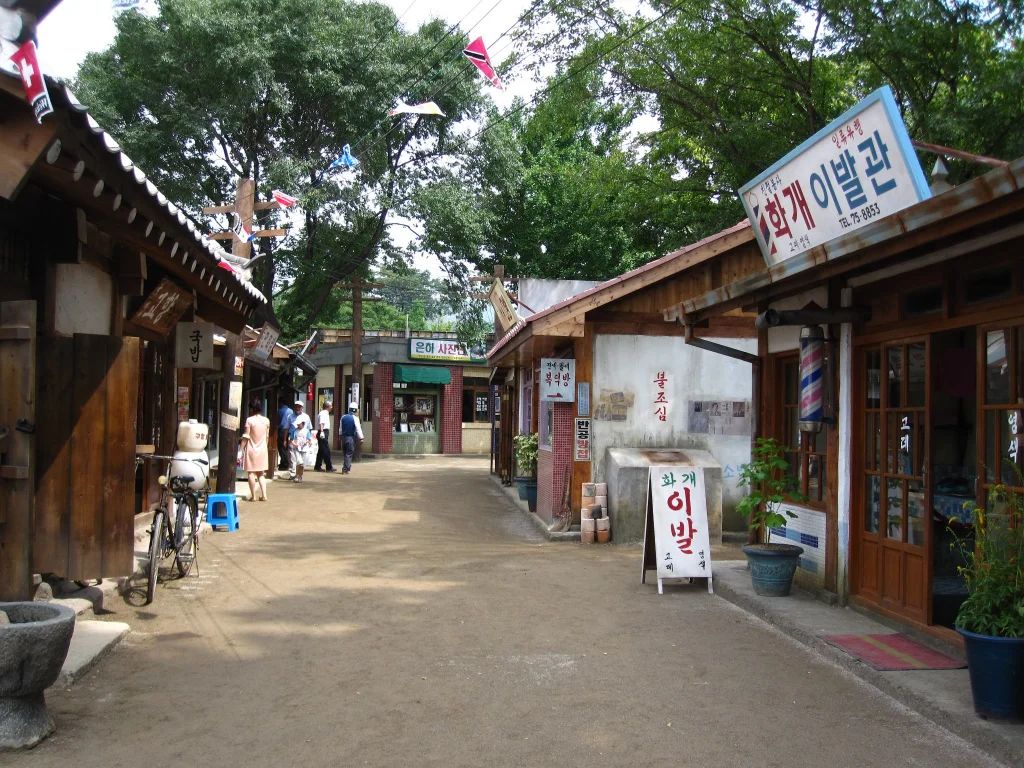
facebook.com/tnfmk/photos/a.294876887191144/303194366359396
It is a folk museum where you can learn about traditional culture through activities and exhibitions. Because it is close to the exit, it is a good place to stop before leaving Gyeongbokgung Palace. The "Street of Old Memories," which recreates the 1970s and 1980s atmosphere, has recently become a popular photo location.
How to enjoy Gyeongbokgung Palace to the fullest
Must-see events at the Gyeongbokgung Palace
Explore Gyeongbokgung Palace from a different angle. With its carefully orchestrated illumination, the palace takes on a mesmerizing allure as night falls. The night tour season at Gyeongbokgung Palace runs from April to October, and tickets are quickly snapped up once they go on sale.
It is quite hard to make reservation on-line as it's very popular to both koreans and tourists, but you can enter for free even if you don't have a ticket if you wear a Hanbok (traditional Korean clothing), so if you can't make a reservation, try going to a Hanbok rental house. Admission is free for those under 18 and over 65.
· Date: Every April and October (schedule may vary each year) · How to purchase: Online reservation(limited tickets), on-site first-come, first-served purchase · Entrance fee : 3,000won per person(19-64yrs old) / Admission is free for Hanbok wearers and for those under 18 and over 65.
It is a traditional cultural event that reenacts the past ceremony of changing the royal guard. It takes place twice a day in the Gwanghwamun area. The procession of guards, dressed in traditional attire and armed with weapons, marches to the beat of Chwitadae (Korean traditional marching band). This event recreates a historical scene based on Joseon Dynasty records.
Special events include the appointment ceremony of the Royal Guards in March and the guard army inspecting performance called "Cheopjong” in May and October.
· Operating hours: 10:00 AM, 2:00 PM · Duration: 20 minutes · Location: Gwanghwamun and Heungryemun Squares
"Saenggwabang" was a place where desserts and special dishes were made for the king and queen. Saenggwabang opens for a limited time to offer visitors sweets and medicinal tea from the palace that were once served to the royal family. The Nain (court ladies) and Chabi (court maids) who served the king will guide you and make you feel like a king. The signature menu item is "Seoyeohyangbyeong," a steamed rice cake made with honey-soaked yam that is only available for 40 pieces per day.
· Date: Every September to October (schedule may vary each year) · Location: Sojubang "Saenggwabang"
It is the largest annual traditional culture festival held in May. It takes place at the five major palaces in Seoul, including Gyeongbokgung Palace, Changdeokgung Palace, Changgyeonggung Palace, Deoksugung Palace, Gyeonghuigung Palace, and Jongmyo Shrine and Sajikdan Altar. Visitors to the palaces can enjoy a variety of programs such as theater performances, concerts, and traditional ceremonies.
· Date: Every May (schedule may vary each year) · Location: The vicinity of the five major palaces in Seoul, Jongmyo Shrine, and Sajikdan Altar
Don't miss out!
Useful tips to know before visiting!
✓ Closed every Tuesday ✓ Free admission on the last Wednesday of every month ✓ Free admission when wearing a Hanbok ✓ Free admission for children under 6 and senior citizens over 65 ✓ Check the entrance times as they vary each month. ✓ Reservation is required for viewing inside the Gyeonghoeru Pavilion. ✓ Guided tours in various languages are available at designated times. ✓ Enter directly by tapping your transportation card at the entrance, without the need for a separate admission ticket.
The Gyeonghoeru Pavilion is open to the public from April to October each year.
